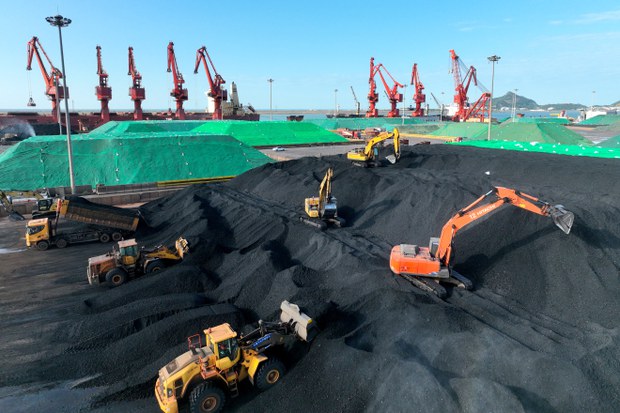China’s coal consumption grew by 4.6% in 2022 to a new all-time high of 4.5 billion metric tons, dragging with it global coal demand offsetting declines in Europe and North America, a new report by an energy watchdog said.
The coal market globally rose by 3.3% to hit a fresh new record of 8.3 billion metric tons in 2022, and will stay near that record level this year due to solid growth in Asia for both power generation and industrial applications, said the Paris-based organization International Energy Agency.
The news comes as climate monitors warn of global temperatures reaching record highs in July, and coal is a major source of the emissions that cause global warming.
Continued strong growth in Asian economies offset declines in Europe and North America, highlighting the need for more robust policies and investments to accelerate clean energy development, IEA said in their mid-year Coal Market Update, published on Thursday.
Demand in China was higher than expected last year due to lower quality coal that resulted in higher-than-expected volumes, while more coal than expected was gasified to produce synthetic liquid fuels, plastics and fertilizers that increased the demand for non-power by 7%.
Coal demand in Indonesia soared by about 36% to 201 million metric tons, making Indonesia the fifth largest coal consumer after China, India, the United States, and Russia.
The IEA said 10,440 terawatt hours were generated from coal in 2022, which accounts for 36% of the global electricity generation.
Coal, being a fossil fuel, exerts a significant toll on the environment. Environmental organization Greenpeace has labeled it “the most environmentally harmful and polluting method of energy production.”
“Coal is the largest single source of carbon emissions from the energy sector, and in Europe and the United States, the growth of clean energy has put coal use into structural decline,” said Keisuke Sadamori, IEA’s director of energy markets and security.
“But demand remains stubbornly high in Asia, even as many of those economies have significantly ramped up renewable energy sources. We need greater policy efforts and investments – backed by stronger international cooperation – to drive a massive surge in clean energy and energy efficiency to reduce coal demand in economies where energy needs are growing fast.”
Coal consumption will grow in 2023
China is the world leader in renewable energy, but it also continues to devour coal, mainly to continue with its economic growth trajectory and tackle power failures due to heat waves and drought.
In 2023, global coal demand is estimated to have grown by about 1.5% in the first half to about 4.7 billion metric tons. It was mainly due to the two largest consumers, China and India, growing by over 5%, more than offsetting declines elsewhere.

IEA projected China, India and Southeast Asian countries together are expected to account for 3 out of every four metric tons of coal consumed worldwide.
“In total, we expect China’s coal demand in 2023 to grow by about 3.5% to 4.6 billion metric tons, with demand from the power sector up 4.5% and demand from non-power uses growing by 2%,” the report said.
China and India account for two-thirds of global coal consumption, which means they use twice as much coal as the rest of the world combined.
In 2023, the duo could account for nearly 70% of the world’s global coal consumption, while the United States and the European Union could account for just 10%, IEA said.
Meanwhile, on the production side, the three largest coal producers – China, India and Indonesia – all produced record amounts in 2022.
IEA said China and India set new monthly records in March this year, with China surpassing 400 million metric tons for the second time ever and India surpassing 100 million metric tons for the first time.
That month, IEA said that Indonesia exported almost 50 million metric tons, a volume never shipped by any country before.



